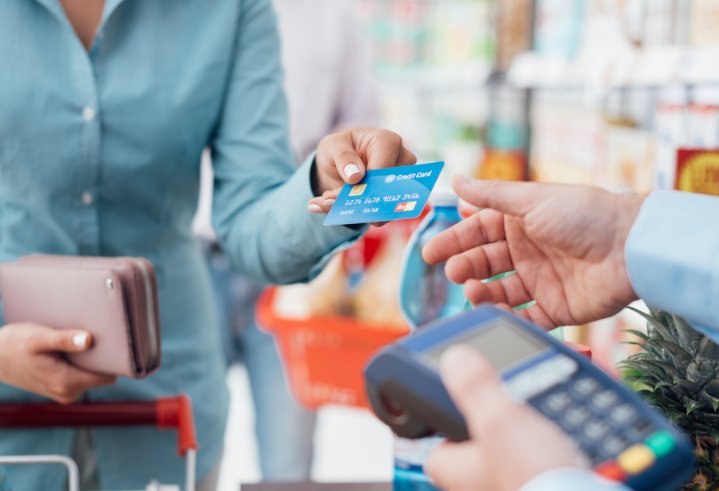5 upcoming trends set to shake up the retail sector

The retail sector has gone through an enormous amount of change in the last ten years with disruptors like Amazon moving into the global marketplace and the boom of online shopping in place of bricks and mortar ventures. However, this has actually made the retail sector more responsive to demand, and more open to smaller retailers, start ups and entrepreneurs.
Across Australia, larger retail outlets are closing and merging, even heritage brands like Oroton, David Jones, Myer and Dick Smith have been hit hard, while other ventures flourish.
While Myer continues to battle against difficult conditions, Dick Smith shut all stores and 3000 workers lost their jobs. As well as this, “a savage $712 million impairment charge has taken the gloss off the takeover of upmarket department store David Jones by South Africa's Woolworths,” according to the Australian Broadcasting Corporation.
“The write-down in value represents roughly a third of the $2.2 billion Woolworths forked out to buy David Jones in 2014.”
But the news is not all bad. In fact, many smaller retailers and start-ups are taking the place that the big brands used to occupy, meaning that retail workers, managers, and office staffers are still in very high demand. In fact, the number of sales assistants in the country is 517,800, and rising. There are likely to be around 445,000 retail job openings over the next five years (and that's about 89,000 a year), according to Job Outlook. SkillsTalk even found the best retail companies to work for in australia.
There are many upcoming trends in the retail sector that workers and shoppers alike can expect towards the year 2020 and beyond. Here are five to watch.
Retail trends in 2019
- Connected retail.
- Big data analytics.
- Consumers’ sentiment is more challenging to win.
- Australians might be starting to spend again.
- Renewed focus on the luxury experience.
1. Connected retail.
 The formal term for ‘bricks and clicks’, connected retail refers to the seamless integration between a department store’s physical and digital channels. And it’s never been so critical. A survey by Canstar Blue earlier several years ago revealed 25% of customers believe they no longer need to visit bricks and mortar stores.
The formal term for ‘bricks and clicks’, connected retail refers to the seamless integration between a department store’s physical and digital channels. And it’s never been so critical. A survey by Canstar Blue earlier several years ago revealed 25% of customers believe they no longer need to visit bricks and mortar stores.
However a more recent study by SmarterHQ paints a different picture for millennial shoppers. Not only do they go to the stores, 50% of them prefer going to them over online shopping. So it seems like physical shopping is not dying, but it would be a grave mistake for retailers not to put a huge effort into their digital channels. Read Retail skills are transferable life skills.
However, there’s more to integration than cranking out a smartphone app. US retail think-tank L2 believes digital competence involves innovating in four main areas that include a fully functional e-commerce website, digital marketing, mobile support, and social media. The idea is that you’ll be alerted to a store’s special through an ad on Facebook, purchase the item over your phone while in the latte cue, then spruik your new purchase using the store’s hash tag and a decadent Instagram selfie.
Interestingly this trend is unlikely to occur across all brands simultaneously. While premium stores such as David Jones and Myer are looking to improve their integration, discounters like K-mart have indicated that they’ll be focusing more on improving operations throughout existing physical stores.
2. Big data analytics.
 Another trend that continues to grow in the department store sub-sector, big data analytics, is about rapidly gathering data from customers to assist with target marketing and general business operations.
Another trend that continues to grow in the department store sub-sector, big data analytics, is about rapidly gathering data from customers to assist with target marketing and general business operations.
While analytics have been used to improve the performance of online channels for some time, many stores have commenced integrating the technology to gather critical information from customers who shop in store. A popular platform used by many retailers are smart beacons like iBeacon and Google’s Eddystone.
These devices are used for in-store tracking to communicate with a customer’s smartphone and relay information back to management regarding store traffic flow. Relevant product information can also be pushed to a shopper’s phone when they enter specific areas to alert them of special offers. Read Why getting a qualification in retail could enhance your career.
Adoption of the technology has been robust, and looks set for continued growth, as it has generate around US $4 billion in offline retail sales.
Of course, there will be hurdles. Apart from concerns over security and privacy, companies will need to provide incentives for customers to install the relevant applications on their phones and ensure any in-store communication is beneficial to the customer instead of being a nuisance.
3. Consumers’ sentiment is more challenging to win.

For many retail subsectors it’s no longer just about the price. Consumers increasingly care where the products they’re buying are sourced and that’s going to have an effect on supply chain management.
Department stores, for instance, are fast realising that overseas suppliers who practice questionable labour standards represent an increasing risk. The power of social media means any overt violation could spread around the world overnight and cause significant brand damage.
At the same time, the movement towards organic and ethically sourced produce is a key trend for supermarkets, restaurants and other food retailers.
As a result, we can expect many industry players to invest in transparent and ethical suppliers to bolster brand sentiment.
4. Australians might be starting to spend again.
 The last five years haven’t been easy for the retail sector. However according to Australia’s Bureau of Statistics (ABS), seasonally adjusted retail sales jumped by 1.2% in November 2017, well over the 0.4% increase predicted.
The last five years haven’t been easy for the retail sector. However according to Australia’s Bureau of Statistics (ABS), seasonally adjusted retail sales jumped by 1.2% in November 2017, well over the 0.4% increase predicted.
And if you factor in that 5.5% of those sales were contributed by online shoppers (the largest monthly percentage contributed by online sales in history), once again digital channels are showing that they are here to stay.
But it may not signal a long-term trend, and with a possibly earlier than expected raising of interest rates, the market continues to remain uncertain. There also remains the overall downward trend with continued subdued wages and high household debt.
5. Renewed focus on the luxury experience.

With strong growth in online sales, marquee bricks and mortar retailers are looking to provide value in ways that are not possible for exclusively online competitors. For the marquee brands that means providing a luxury shopping experience.
David Jones, for instance, has provided more food offerings. After updating its existing food halls and adding cafes and restaurants within core stores, it’s going to consider opening stand-alone food outlets. Customer relationship management at David Jones will also be improved so consumers can expect a new loyalty scheme.
Speciality stores are also likely to consolidate their luxury offerings off the back of strong tourism data, with luxury retail expected to grow at 8.5 per cent (annualised). Due to the lower Australian dollar, tourists from China increased by 27.9% from the year to August 2016, contributing 30% to the growth of luxury item sales according to IBISWorld’s Luxury Retailing in Australia report.
“Heritage luxury powerhouses like Louis Vuitton, Hermes and Chanel have taken this opportunity to expand over the past five years, while experimental and emerging labels have also grown with the assistance of luxury boutique stores,” says IBISWorld.
Could you get a better job in retail?
There's no doubt that the area of retail is an exciting and growing profession, which offers stability, career fulfillment and a wide variety of job roles. Read Upskilled'd Retail Industry Insight.
There will always be a place for the retail experience but the increased volatility and rapid structural changes taking place – largely due to technology disruption – are threatening established retail powers. Retailers that will do well will embrace new competition and technology as they move towards crafting innovative consumer experiences that are both fresh and exciting.
Thinking of gaining professional skills in retail? At Upskilled, we offer a range of online courses that are flexible, affordable and self-paced, including nationally recognised qualifications. Whatever your personal or professional goals are, Upskilled has a course to suit your needs. Search online retail courses.


)
)

